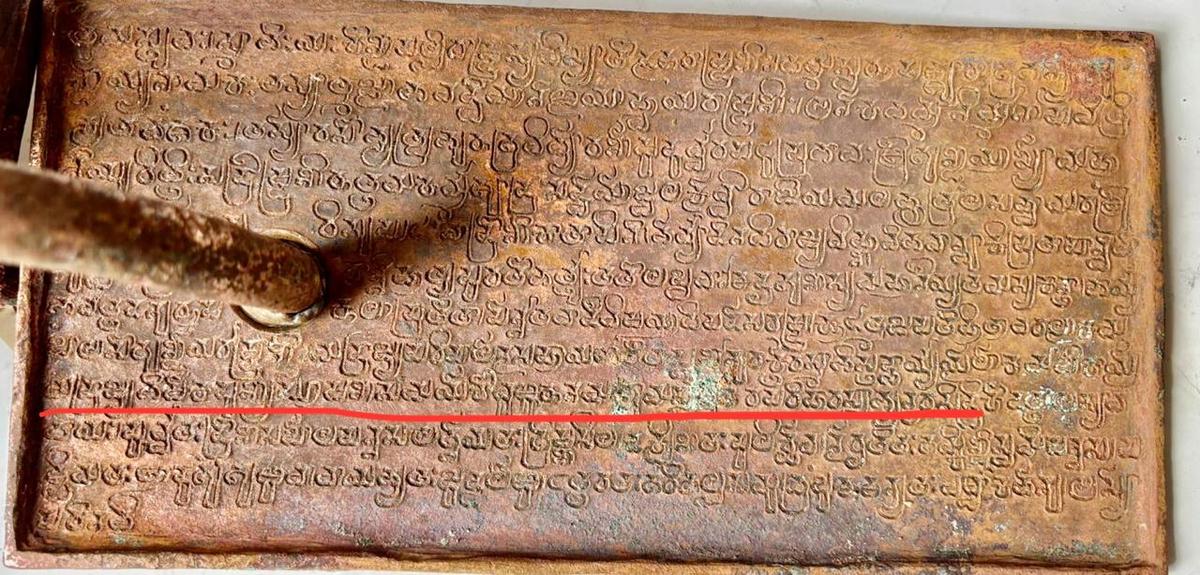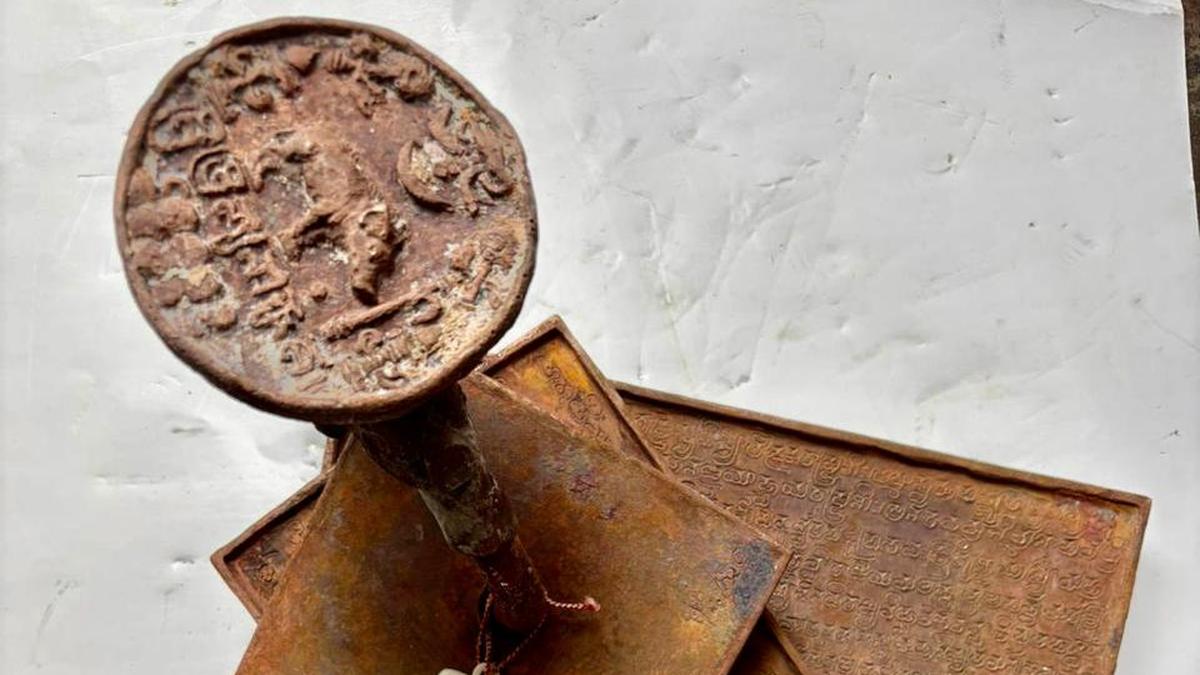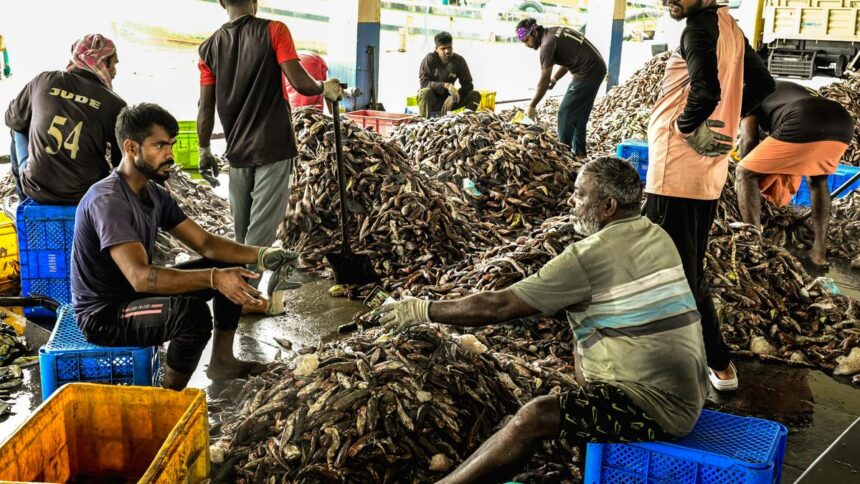
Three-leaf copper plate with an inscription found in Kodada of Suryapet district in Telangana
| Photo Credit: By Arrangement
An inscription on a copper plate found recently in Kodad of Suryapet district in Telangana sheds light on the earliest recorded genealogy of the Kakatiya dynasty — which ruled from 1000 to 1323 A.D. in several parts of the Southern India — tracing their origins as feudatories under the Eastern Chalukyas also known Vengi Chalukyas, said Dr. K. Munirathnam Reddy, director (Epigraphy), Archaeological Survey of India (ASI).
The three-leaf copper plate, found in a graveyard at Kodad town, is preserved by the Department of Heritage in Hyderabad.
Written in Sanskrit using Telugu script
Issued during the coronation of Vikramaditya II in 918 CE, the record details the grant of a village to the family of a fallen Kakatiya ancestor who aided the Chalukya King in a succession battle. The inscription was written in Sanskrit using Telugu script and is dated Saka 840 (Phalguna Bahula Panchami, Saturday), which corresponds to March 6, 918 CE.

The inscription on three-leaf copper plate found in Kodad of Telangana
| Photo Credit:
By Arrangement
The genealogy
The inscription begins with a eulogy of the Samanta Vetti family (ancestors of the Kakatiyas) and mentions the genealogy of the dynasty from Kubja Vishṇuvardhana down to Vikramaditya II, along with their ruling periods. It lists their genealogy as Samanta Vetti, Gunda I, Erra, and Gunda II. It also mentions that Talapa captured and imprisoned the boy king Vijayaditya and ruled the kingdom for one month.
The inscription records that King Vikramaditya II, on the occasion of his coronation, granted the village of Kovuṛu, situated in Kanḍeruvaḍi vishaya, to Lokamamba — wife of Gunda II (administrator of Kondapalli vishaya) — who had died while assisting Vikramaditya II in the war against Talapa to regain the throne.
It was issued by Vikramaditya II, son of Chalukya Bhima I and Vijayamahadevi, and bears the Chalukya royal seal depicting a boar (Varaha) and the legend Sri Tribhuvanamkusa. The discovery and preservation were facilitated by Suryapet district collector, Tejas Nandlal Pawar.
Published – July 17, 2025 03:06 pm IST





















